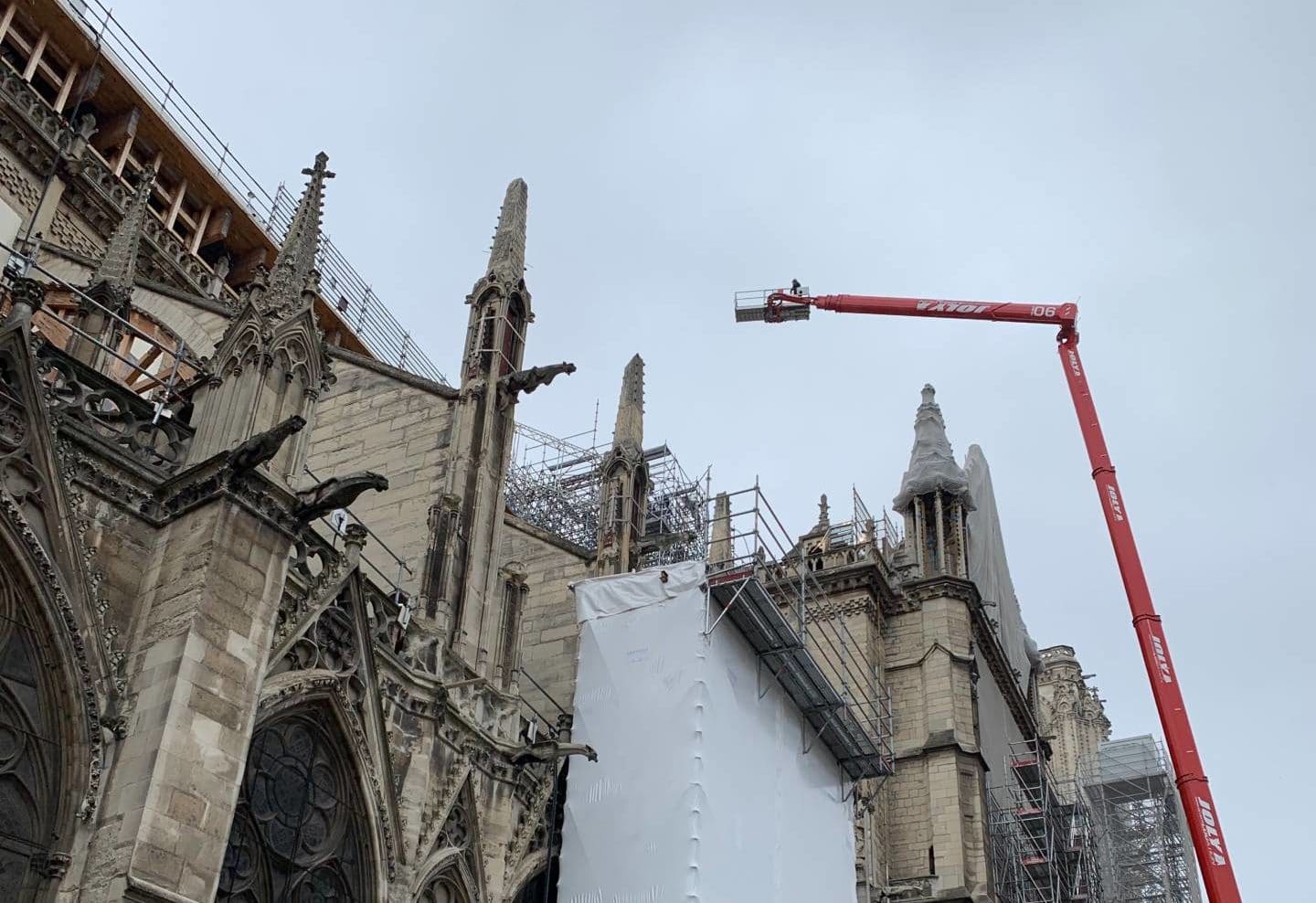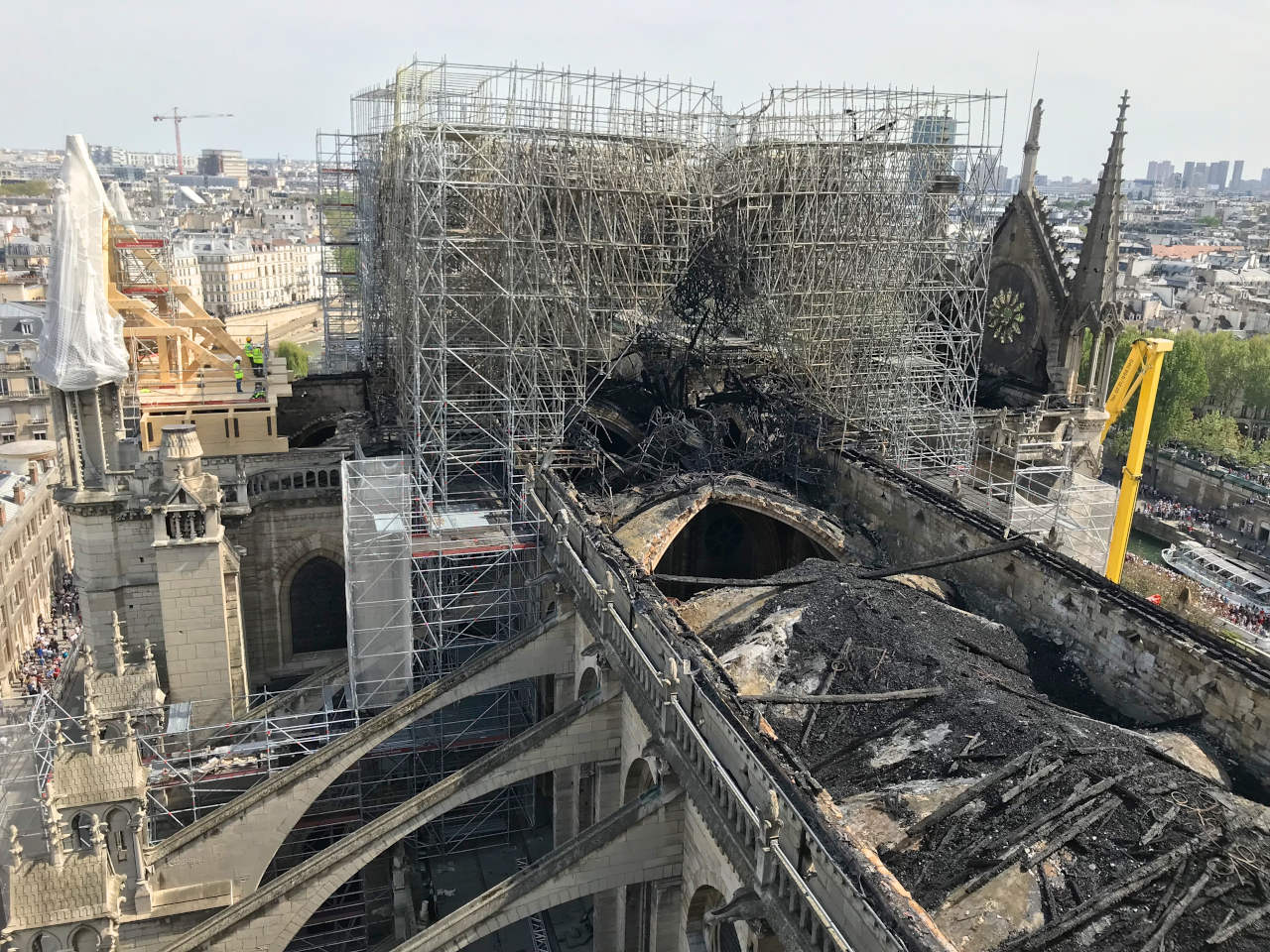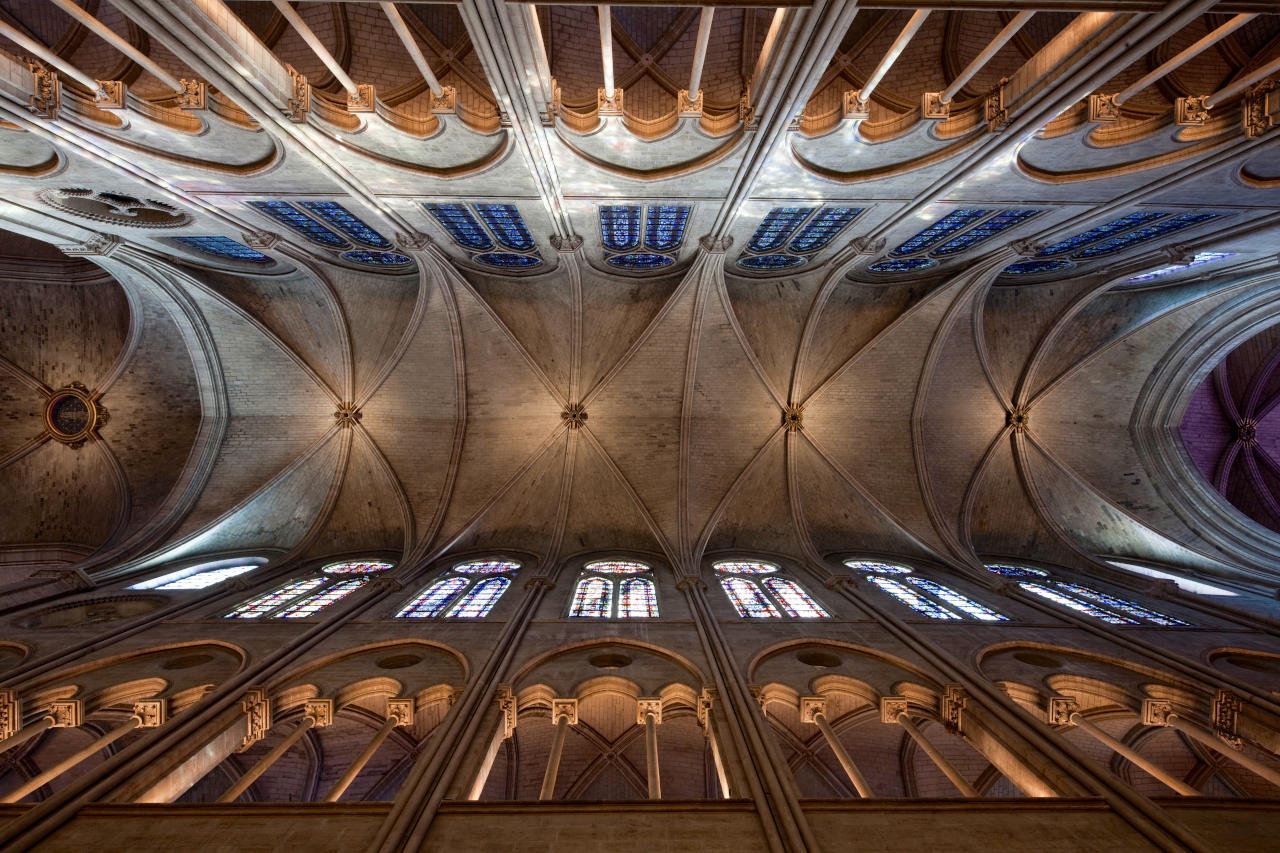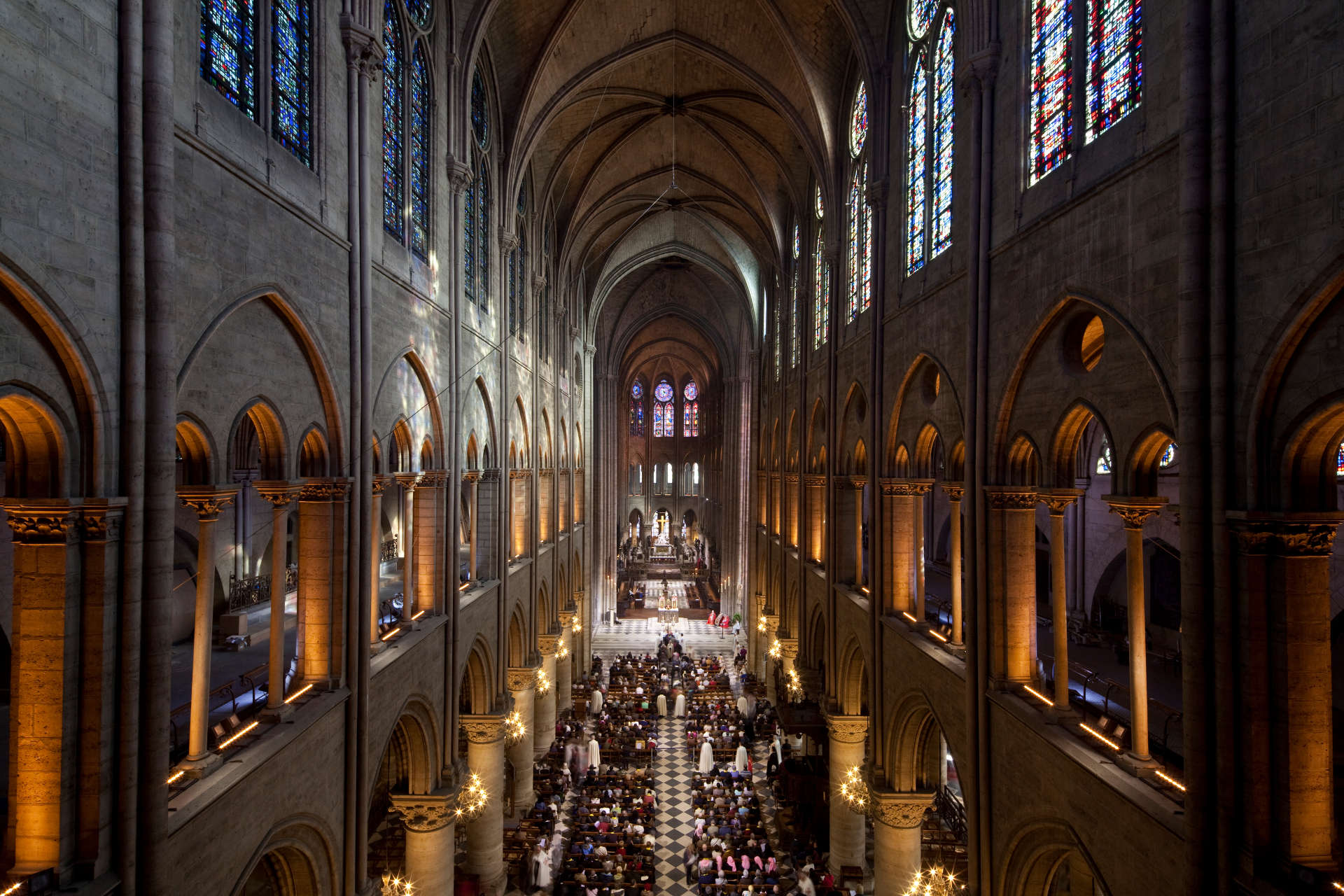On April 15, 2019, the world watched in horror as Notre-Dame Cathedral burned. Almost as quickly as the fire was extinguished, there was a huge international outpouring of support and pledges to rebuild Notre-Dame.
10,500 Friends of Notre-Dame de Paris donors in the US and in more than 50 countries outside of France raised $10.6 million in 2019.
Together, we still have more work to do to rebuild Notre-Dame Cathedral.
In the days following the fire, President Emmanuel Macron set a five-year deadline aiming to have Notre-Dame Cathedral open to visitors and worshippers by 2024. The restoration of the cathedral in its entirety will take longer to complete.
In the meantime, Notre-Dame Cathedral remains closed to the public.
The rebuilding and restoration work is divided into three primary phases:
- Safety Phase (2019-2021)
- Reconstruction (2021-2024)
- Restoration (2025-completion)
The Fire
In the evening of April 15, 2019, fire tore through the Notre-Dame Cathedral’s attic. The fire destroyed the spire, the majority of the roof, and the “forest”, as the lattice of ancient wooden beams in the attic was known. The walls of the nave, choir and two transepts suffered severe water damage and were no longer structurally sound. The north tower belfry was also partially burned, but fortunately the bells remained unharmed. The magnificent rose windows also survived the blaze.
Notre-Dame Cathedral’s famous Grand Organ was also saved but was in critical condition due to the water damage it sustained and lead contamination, as lead melted from the roof during the fire.
Safety Phase
Timeline: April/May 2019-August 2021
In the months immediately following the fire, experts conducted assessments to examine the extent of the damage, identify areas in immediate danger and begin scientific analysis of the materials medieval builders used to construct Notre-Dame Cathedral.
Once the initial assessments were complete, efforts began to secure the cathedral and prevent further damage. These works included:
- Installing a tarp above the vaults to protect from rain
- Lead decontamination
- Fortifying the north, south and west gables, especially to protect the 3 large rose windows
- Fortifying the most damaged pillars of the nave
- Reinforcing the flying buttresses
- Wrapping and protecting the gargoyles and other sculptural elements of the north and south towers
- Removing burnt and melted scaffolding that had previously surrounded the spire
Removing the burned scaffolding was key to the next phase of Notre-Dame Cathedral’s reconstruction. In 2019, the spire was undergoing much-needed restoration and was completely destroyed by the fire on April 15. The 40,000-piece web of tangled, melted metal weighing 200 tons – half of which perched over 300 feet high – dangled precariously, posing a serious threat of collapsing into the cathedral. A team of scaffolders, rope access technicians, aerial platform workers and crane operators who worked for months to carry out this delicate operation. The project was completed in November 2020.
Once the scaffolding was removed, work could begin on the interior of the cathedral without risk. This included building a scaffolding structure inside the cathedral to protect the vaults and provide a framework of support so they can undergo reconstruction. The scaffolding helps buttress the weight carried by the vaults, so construction can continue without risking the integrity of Notre-Dame Cathedral’s structure.
Construction paused for three months due to the COVID-19 pandemic. Works resumed on Notre-Dame Cathedral on June 8, 2020.
On July 9, 2020, the National Commission for Heritage and Architecture (CNPA) unanimously approved plans to restore Notre-Dame Cathedral to its last complete, coherent and known state, as it stood on the morning of the fire. The Chief Architects of Historical Monuments presented their restoration plans to the CNPA, which is the advisory council that handles important restoration projects in France.
While architects offered proposals to rebuild Notre-Dame with a glass spire, rooftop garden and other modern features, this decision ensures that the cathedral will be rebuilt as we know it, including rebuilding a spire identical to the one designed in the 19th century by architect Eugène Viollet-le-Duc. Rebuilding efforts will also use original materials, like wood for the roofing.
President Macron shared his approval for this decision the day of the announcement.
Safety Phase Cost
The Safety Phase cost $197 million (165 million euros).
The support of Friends of Notre-Dame de Paris donors was critical, especially to implement the essential works in the immediate aftermath of the fire. Additional funds are donated by French donors, including the wealthy French families behind LVMH and Kering who pledged $226 million and $113 million, respectively.





